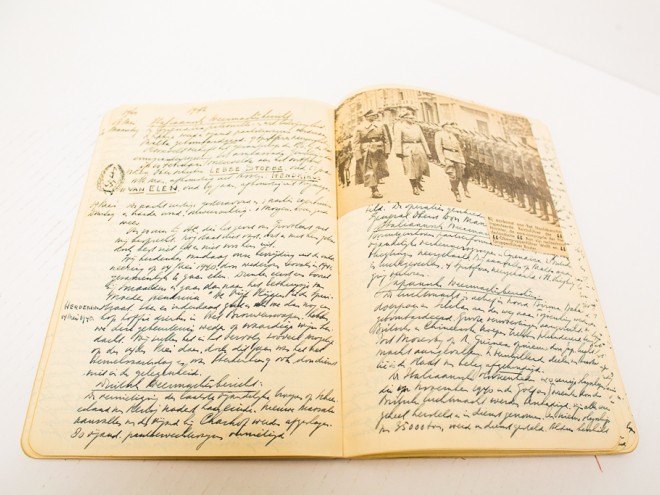The story of how Miep Gies, along with other business associates and friends of Anne Frank’s father, courageously hid his family from the Nazis is well known. After World War II ended, Gies returned to the Secret Annex and found the diary in which Anne had recorded her experiences and feelings. Gies presented Anne’s father, Otto, with the diary, which he published in an edited form. In Behind the Bookcase, Barbara Lowell and Valentina Toro approach Gies’s story as one of personal moral conviction and empathy, one with great significance for young readers today. The book’s shared focus is on both Gies and Anne, defining their story as one of friendship and shared suffering. Author and illustrator do not deny Miep Gies’s extraordinary heroism but frame it as a natural response to the events of her life and the depth of her emotional involvement in her Jewish compatriots’ tragedy.
Using spare and understated language, Lowell introduces background information about the Nazi occupation of the Netherlands and of Anne’s time in hiding, before her family is betrayed and arrested. The author refers to the ways in which Jewish lives “had become unpredictable and dangerous,” and how, in spite of great personal risk, Miep Gies agrees to help the Franks and several of their acquaintances “without hesitating.” Gies’s parents had sent her from their home in Vienna to Holland after World War I to escape poverty; the physical deprivation and loneliness of her childhood, and the welcome she found with her Dutch foster family, were a profound influence on her choices as an adult. This natural transition from vulnerable child to adult protector is a central part of Gies’s path in life.
Lowell’s details convey the harrowing balance in Anne’s life, as she tries to maintain elements of a normal adolescence under grossly distorted conditions. As a young woman, Gies is able to relate to Anne’s emotional needs. In addition to bringing news of the war, Gies admires Anne’s collection of movie star photos and even brings her a pair of used red high heel shoes, recognizing the teen’s need for beauty even under impossible conditions. Gies and her husband even spend a night in the Secret Annex, as they need to internalize emotionally the imprisoned Jews’ adaptation to terrible circumstances. Throughout the book, Gies strives to shelter Anne physically, but also to preserve for her, as far as possible, a semblance of her former freedom.
Valentina Toro’s images are powerful. Her limited color palette of blue, grey, and brown shades, along with her use of angles and space, are reminiscent of expressionist theater. Pictures capture the claustrophobic conditions of the Secret Annex. In one scene, Anne is seated on the floor with her diary in the same cramped area where others read a newspaper while standing, prepare food at a small counter, or huddle in a corner. After the Jews have been betrayed by an informant, another picture depicts their legs descending a staircase to leave their sanctuary forever. There is a ghostly quality to Toro’s characters, whose minimally sketched features are a foreshadowing of their fate. The illustrations have a symbolic dimension, without sacrificing historical realism. Anne Frank, Miep Gies, and the other Jews and their protectors are trapped by the horrors of their time, but Lowell and Toro grant them individual dignity and meaning.
This highly recommended book includes a detailed “Author’s Note,” and suggestions for further reading.
Emily Schneider writes about literature, feminism, and culture for Tablet, The Forward, The Horn Book, and other publications, and writes about children’s books on her blog. She has a Ph.D. in Romance Languages and Literatures.




